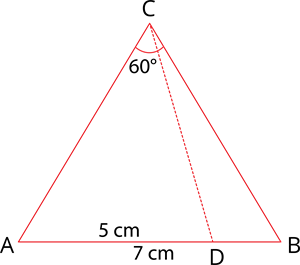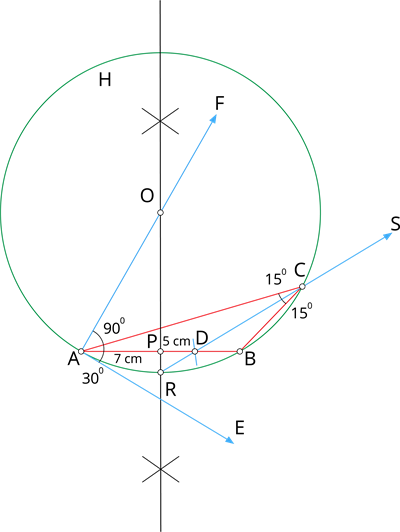
PUMPA - SMART LEARNING
எங்கள் ஆசிரியர்களுடன் 1-ஆன்-1 ஆலோசனை நேரத்தைப் பெறுங்கள். டாப்பர் ஆவதற்கு நாங்கள் பயிற்சி அளிப்போம்
Book Free DemoLearn how to construct a triangle with an example if its base, vertical angle and the point on the base where the bisector of the vertical angle meets the base are given.
Example:
Draw a triangle \(ABC\) of base \(AB = 7 \ cm\), \(\angle C = 30^{\circ}\) and the bisector of \(\angle C\) meets \(AB\) at \(C\) such that \(AD = 5 \ cm\).
Solution:
First, let us draw a rough figure.

Construction:

Step 1: Draw a line segment \(AB = 7 \ cm\).
Step 2: At \(A\), draw \(AE\) such that \(\angle EAB = 30^{\circ}\).
Step 3: At \(A\), draw \(AF\) such that \(\angle FAE = 90^{\circ}\).
Step 4: Draw the perpendicular bisector to \(AB\), which intersects \(AF\) at \(O\) and \(AB\) at \(P\).
Step 5: Draw a circle with \(O\) as the centre and \(OA\) as the radius.
Step 6: From \(A\), mark an arc of \(5 \ cm\) on \(AB\) at \(D\).
Step 7: The perpendicular bisector intersects the circle at \(R\). Join \(RD\).
Step 8: \(RD\) produced meets the circle at \(C\). Now, join \(AC\) and \(AB\).
Thus, \(\triangle ABC\) is the required triangle.